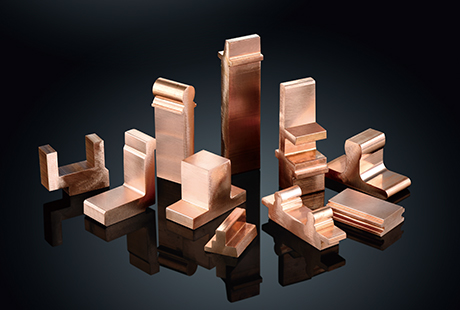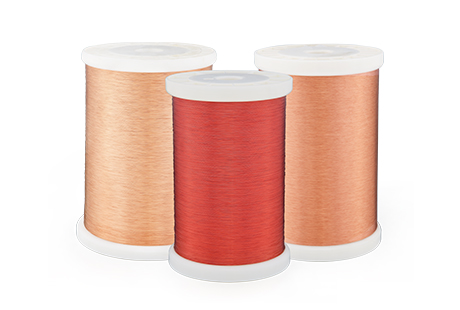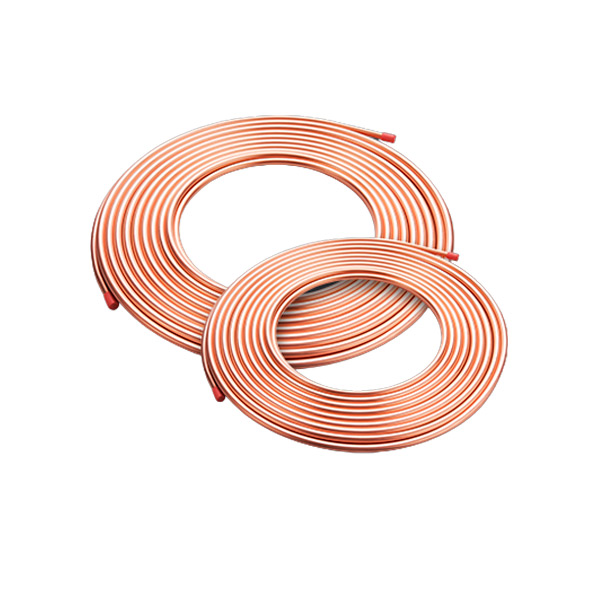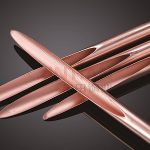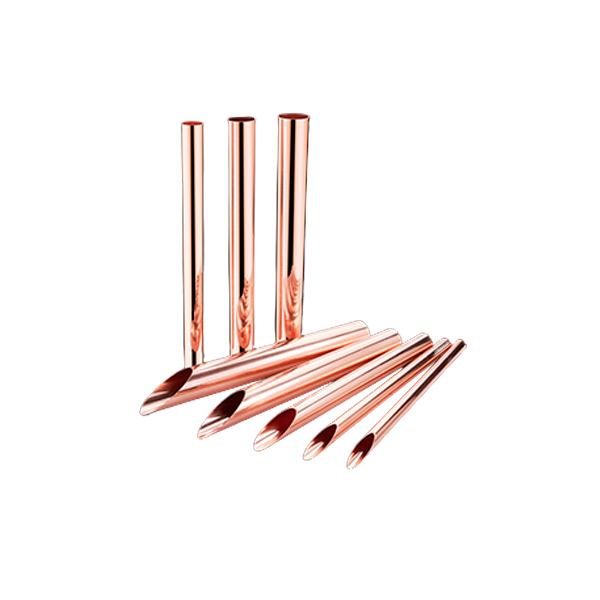Enamel coated wire is the main material for winding electromagnetic coils in industrial motors (including motors and generators), transformers, electrical instruments, electrical and electronic components, power tools, household appliances, and automotive appliances.
1. Product overview of enamel coated wire
Enamel coated wire is a main type of winding wire. It is made of a metal conductor as a conductive inner core and coated with a polymer insulating layer. It is mainly composed of these two parts; it is the conversion of electromagnetic energy into mechanical energy, heat energy, sound energy, light energy or mechanical energy, heat, chemical, sound, light and other energy into electromagnetic energy functional materials.
The conductor part of the enamel coated wire is generally annealed undoped pure metal, such as copper and aluminum. In some occasions, copper alloy, gold, silver, nickel, stainless steel and other materials are also used. According to the difference of working voltage and temperature, enamel coated wire Polymers such as polyester, polyester, polyesterimide, and polyimide are often used as insulating film materials for the metal wires of electromagnetic coils.
The upstream of the enamel coated wire is the copper rod industry, and the downstream is various consumer terminals, mainly motors and transformers. Enamel coated wire is a kind of winding wire (magnet wire). Winding wire is a conductive metal wire with an insulating layer, which is used to wind coils or windings of electrical products. Its function is to generate a magnetic field through the current, or cut the magnetic force line to generate an induced current, so as to realize the mutual conversion of electric energy and magnetic energy, so it is also called electromagnetic wire.
The conductive cores of winding wires include round wires, flat wires, t shape brass strip, foils, etc. At present, most of them use copper wires, and some use aluminum wires. In order to improve the tensile strength of aluminum winding wires, high conductivity and high strength aluminum alloys can be used.
2. The production process of enamel coated wire
Paying off, annealing, painting, baking, cooling, winding up.
Paying off is to pay off on a normal enamelling machine. In order to reduce the energy and physical loss of the operator, a large-capacity pay-off method is usually used. The key to pay-off is to control the tension, which should be uniform and appropriate. At the same time, the payoffs for different specifications of wires are also different. Large-size and large-capacity spools generally use radial rotary payoffs; medium-size wires generally use over-end or brush-type payoffs; Brush or double tapered sleeve pay off.
Annealing is carried out after the wire is released. The purpose of annealing is to disrupt the molecular lattice structure, so that the hardened wire during the wire release process can recover the softness required by the process after being heated at a certain temperature, and at the same time remove the lubricant and oil stains during the stretching process to ensure the quality of enamel coated wire. After annealing, paint is carried out, which is the process of applying paint to the metal conductor to form a uniform paint layer with a certain thickness. Different painting methods and different wire specifications have different requirements for the viscosity of the paint.
Generally, enamel coated copper wire have to go through multiple coating and baking processes to fully evaporate the solvent and completely react the paint resin to form a good paint film. Baking, like painting, is also a cyclical process. First, the solvent in the paint liquid is evaporated, then cured to form a layer of paint film, and then painted and baked.
Pollutants will be produced during the baking process. The furnace should be removed in time. Generally, a catalytic combustion hot air circulation furnace is used. Ensure safe production and product quality without causing a large amount of heat loss.
The temperature of the enamel coated wire coming out of the oven is high, the paint film is very soft, and the strength is very small. If it is not cooled in time, the paint film will be damaged after passing through the guide wheel, which will affect the quality of the enamel coated wire. The next step of cooling is to take up the wire, the purpose of which is to wind the enamel coated wire onto the bobbin continuously, tightly and evenly. It is required that the wire take-up machine has stable transmission, low noise, proper tension and neat wire arrangement.

 English
English 日本語
日本語 한국어
한국어 français
français Deutsch
Deutsch Español
Español italiano
italiano العربية
العربية tiếng việt
tiếng việt Türkçe
Türkçe ไทย
ไทย 中文
中文
